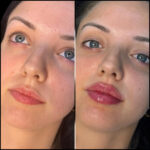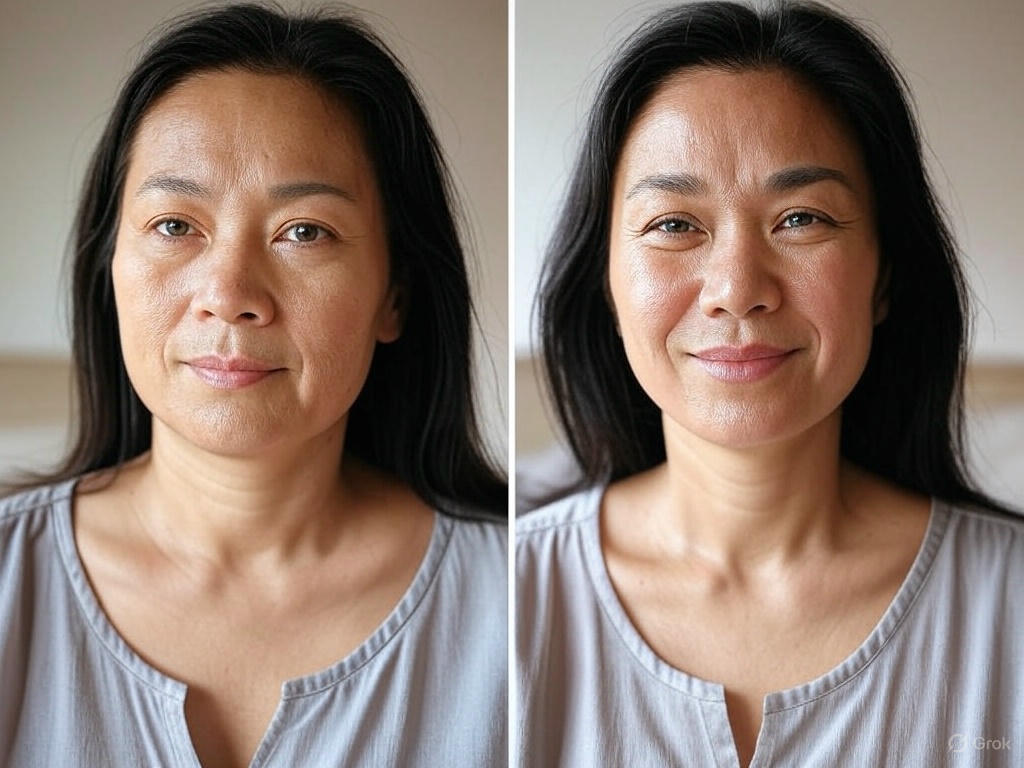Anti-wrinkle treatments have become a popular option for many individuals looking to maintain a youthful appearance. Whether it’s Botox, dermal fillers, or other non-invasive procedures, these treatments can help reduce the appearance of fine lines and wrinkles, giving the skin a smoother, fresher look. However, if you decide to stop receiving these treatments, you might be wondering what the consequences will be. Let’s explore the effects of discontinuing anti-wrinkle treatments and what you can expect as time goes on.
1. Return of Wrinkles and Fine Lines
The most noticeable effect of stopping anti-wrinkle treatments is the gradual return of wrinkles and fine lines. Many of these treatments, such as Botox, work by temporarily relaxing the muscles beneath the skin, which helps prevent wrinkles from forming or deepening. When you stop these treatments, your muscles will start to regain their natural movement, and wrinkles may begin to reappear over time.
For example, if you’ve been using Botox for a while, the effects typically last around three to four months. After this time, the product will begin to wear off, and your facial muscles will return to their normal function, causing wrinkles to become visible again. This process is natural and is a result of the muscles becoming active again after being relaxed for a period.
2. Gradual Diminishment of Results
Dermal fillers, another common anti-wrinkle treatment, provide volume to areas where the skin has lost its youthful plumpness, such as the cheeks, lips, and under the eyes. If you stop getting dermal fillers, the effects will slowly fade as your body metabolizes the filler material. While the filler won’t “disappear” instantly, you may notice that the treated areas start to lose volume, and the skin may look less full or youthful.
The process can take several months to a year, depending on the type of filler used and where it was applied. Over time, your face may return to its natural shape and appearance, which may include the return of any lines or sagging that the filler initially addressed.
3. No Long-Term Aging Reversal
It’s important to understand that anti-wrinkle treatments do not stop the aging process. While they can provide temporary improvements, they do not halt the natural aging of your skin. Once you stop receiving treatments, your skin will continue to age just as it would without any intervention.
For instance, collagen production, which is responsible for skin’s elasticity and firmness, naturally decreases with age. Anti-wrinkle treatments may help combat the visible signs of aging temporarily, but stopping them will not prevent the underlying skin aging process. Over time, your skin may lose some of its elasticity, and wrinkles may become more pronounced as the natural aging process continues.
4. Potential for More Pronounced Wrinkles
When you stop receiving anti-wrinkle treatments, the effects of aging may appear more pronounced than before you started the treatments. This can be particularly noticeable if you’ve been using injectables like Botox for an extended period. While the treatments may have kept your skin smooth for a while, ceasing them could result in a more significant difference between the treated and untreated areas of your face.
For example, if you’ve been using Botox to prevent forehead wrinkles and crow’s feet, stopping the treatment may lead to the sudden appearance of deeper lines in these areas. Similarly, if you’ve been using fillers to restore lost volume, the cheeks or under-eye area may look more sunken after the effects wear off.
5. Emotional and Psychological Effects
Aside from the physical changes, some individuals may experience emotional or psychological effects when they stop anti-wrinkle treatments. For people who have been using these treatments as a way to maintain their self-esteem or appearance, stopping may lead to a sense of disappointment or dissatisfaction with their appearance. The sudden return of wrinkles or loss of facial volume can affect self-confidence, particularly for those who place a high value on their youthful appearance.
It’s important to keep in mind that aging is a natural process, and everyone’s skin will age at its own pace. Embracing this process and focusing on maintaining healthy skin through good skincare routines can be just as rewarding as using anti-wrinkle treatments.
6. Alternatives to Anti-Wrinkle Treatments
If you decide to stop getting anti-wrinkle treatments but still want to maintain your youthful appearance, there are several alternatives to consider. A healthy skincare routine, which includes moisturizing, using sunscreen, and exfoliating regularly, can help slow the development of wrinkles. Additionally, facial exercises, such as yoga for the face, can help keep the skin firm and toned.
For those who prefer a less invasive approach, treatments like chemical peels, laser therapy, and microdermabrasion can help improve skin texture and reduce the appearance of fine lines. These methods may not offer the same immediate results as injectables, but they can support long-term skin health and appearance.
Conclusion
Stopping anti-wrinkle treatments will naturally lead to the gradual return of wrinkles and fine lines. The results will fade over time, and the underlying aging process will continue. However, the effects are not permanent, and the skin will eventually return to its natural state. If you’re concerned about this, consider alternative methods for maintaining your skin’s health and appearance. Embracing the aging process and taking good care of your skin can still help you feel confident, regardless of whether you continue with anti-wrinkle treatments. learn more here – https://www.drmarcaesthetics.com/botulinum-toxin-injections
- What Happens If I Stop Getting Anti-Wrinkle Treatments?
- Anti-wrinkle treatments have become a popular option for many individuals looking to maintain a youthful appearance. Whether it's Botox, dermal fillers, or other non-invasive procedures
- Anti-Wrinkle Treatment
Related posts:
 Expert Lung Care in Jaipur: Why You Shouldn’t Ignore Breathing Issues
Expert Lung Care in Jaipur: Why You Shouldn’t Ignore Breathing Issues
 Control Fasting Blood Sugar with Confidence – Get Glycomet Online Today
Control Fasting Blood Sugar with Confidence – Get Glycomet Online Today
 Effective Weight Loss Clinic Killeen: Your Path to Lasting Results
Effective Weight Loss Clinic Killeen: Your Path to Lasting Results
 How to Prepare for Your Appointment with the Best Plastic Surgeon in dubai for Fillers
How to Prepare for Your Appointment with the Best Plastic Surgeon in dubai for Fillers
 Comment les analgésiques sur ordonnance se comparent-ils aux options en vente libre ?
Comment les analgésiques sur ordonnance se comparent-ils aux options en vente libre ?
 Prozenith: A Natural Weight Loss Supplement 70% OFF Discount
Prozenith: A Natural Weight Loss Supplement 70% OFF Discount
 Recovery and Aftercare Tips for Gynecomastia Patients in Dubai
Recovery and Aftercare Tips for Gynecomastia Patients in Dubai
 How Massage Therapy Can Improve Your Health: A Guide for Queens Residents
How Massage Therapy Can Improve Your Health: A Guide for Queens Residents








